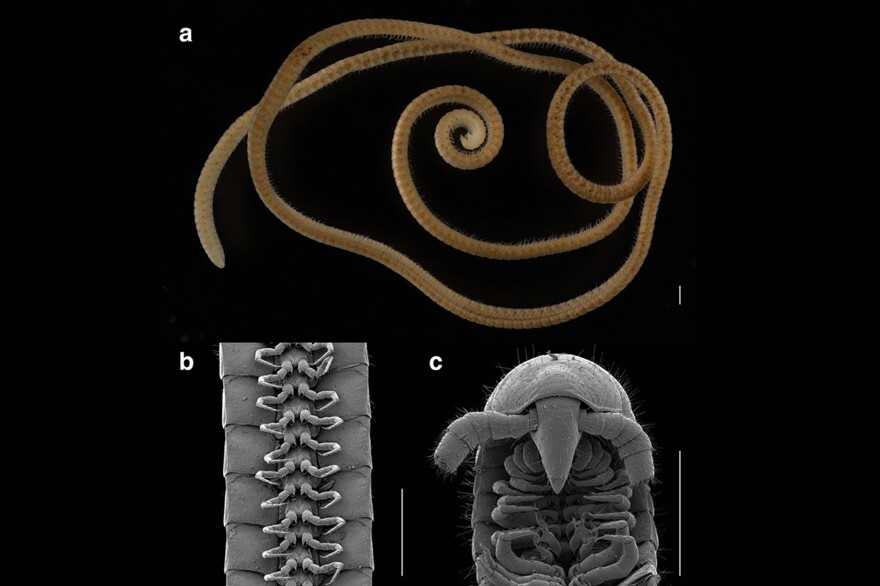With our free press under threat and federal funding for public media gone, your support matters more than ever. Help keep the LAist newsroom strong, become a monthly member or increase your support today.
A millipede with 1,300 legs has been found in Australia. It's a new record by far

The word "millipede" literally means "thousand feet." But until now, the moniker for the creepy invertebrates has been a bit of an exaggeration, with none of them sporting anything close to that many feet — or legs.
However, a new millipede discovered by Bruno Buzatto, a principal biologist at Bennelongia Environmental Consultants in Perth, Australia, lives up to the true meaning of its name.
The researchers counted them all and one specimen of the newly discovered Eumillipes persephone has a total of 1,306 legs. That easily outpaces the previous record holder, a millipede with 750 legs. That millipede was first described in 1928 but it was long thought extinct until being found alive in California by Virginia Tech entomologist Paul Marek, the lead author of the latest paper.
Specimens were found deep in a drill hole
For some people, the new find, E. persephone, named after the Greek goddess of the underworld, would be the stuff of nightmares. Eight specimens were collected over several months beginning last year at depths of 15 meters to 60 meters (50 feet to 200 feet) down in a drill hole created for mineral exploration in the Goldfields–Esperance region of Western Australia.
Buzatto put what is called a "trogtrap" into the drill holes baited with decaying material that is "very attractive" to millipedes, Marek tells NPR. What Buzatto brought to the surface was a millipede that was initially estimated to have around 800 legs. That's when he sent the specimen to Marek for further examination and a more accurate leg count.
The scientists publishing in Scientific Reports describe the largest specimen as a "pale, thread-like" creature just under a millimeter wide with "330 segments, a cone-shaped head with enormous antennae, and a beak for feeding."
Buzatto, a co-author, says he believes it is "a stunning animal, a marvel of evolution."
"It represents the most extreme elongation found to date in millipedes, which were the first animals to conquer land," Buzatto told Reuters. "And this species in particular managed to adapt to living tens of meters deep in the soil, in an arid and harsh landscape where it is very hard to find any millipedes surviving in the surface."
Hatchlings start with just 4 pairs of legs, then add lots more into adulthood
Half the specimens collected were described in the paper. As is typical with other millipedes, the males of this new species were found to have fewer segments and legs than females. One male has 198 segments and 778 legs and another has 208 segments and 818 legs. Besides the record-breaking female with 1,306 legs, another female specimen has 253 segments and 998 legs.
"Hatchlings emerge from the egg with four pairs of legs, and continuously add segments during development for an indeterminate period of time, even after adulthood," the authors explain.
And why so many feet? "The more length you have, the more strength to propel forward," says Juanita Rodriguez, of the Australian National Insect Collection, in Canberra and a co-author of the study.
Copyright 2021 NPR. To see more, visit https://www.npr.org. 9(MDA1OTI3MjQ5MDEyODUwMTE2MzM1YzNmZA004))







